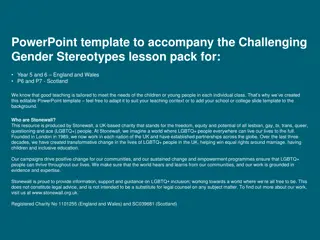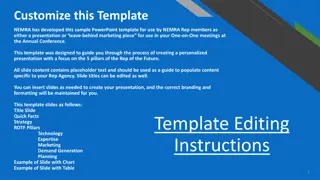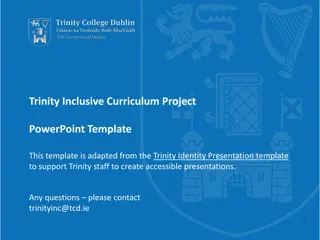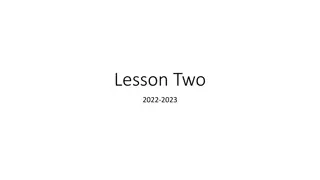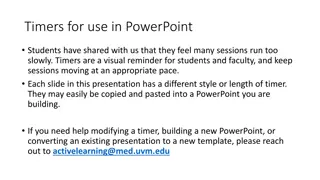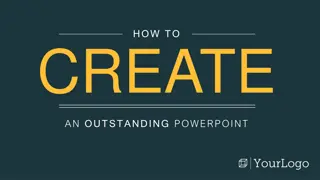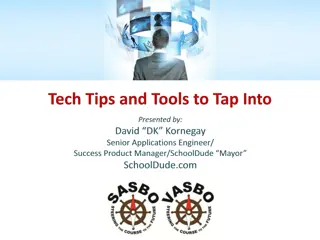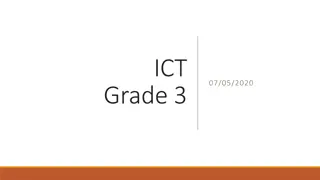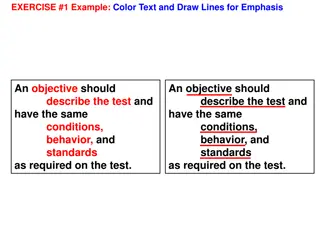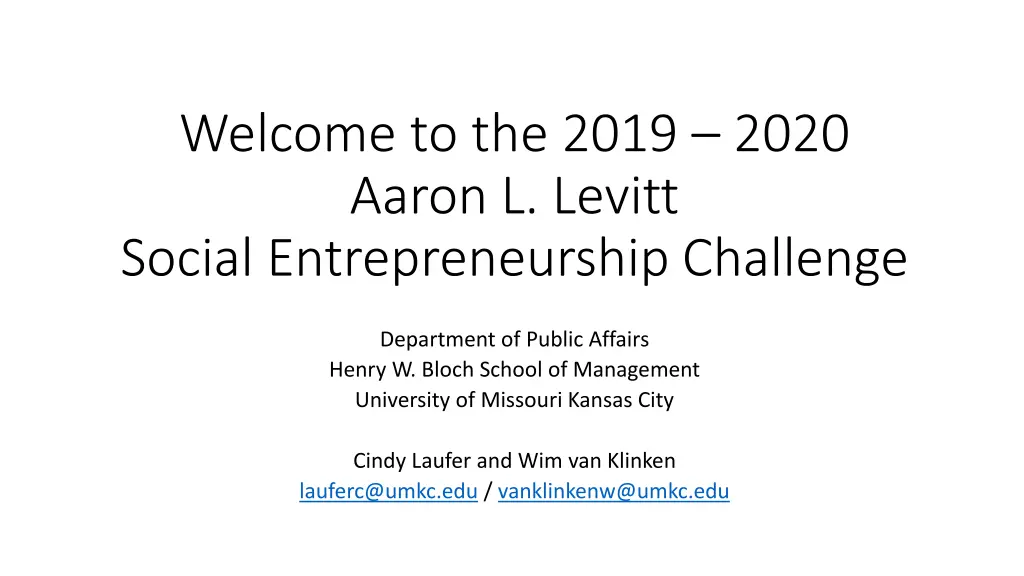
2019-2020 Social Entrepreneurship Challenge at UMKC
Join the Aaron L. Levitt Social Entrepreneurship Challenge at UMKC for a unique opportunity to develop socially entrepreneurial initiatives. Engage in activities like the Marshmallow Challenge, learn about social entrepreneurship, and participate in the timeline leading to the Changemaker event on May 19, 2020. Discover the purpose of the Levitt Challenge and explore the concept of social entrepreneurship. Get insights into creating sustainable social impacts and innovative solutions. Be part of mobilizing the creative energy of civic leaders and social entrepreneurs within the UMKC community.
Download Presentation

Please find below an Image/Link to download the presentation.
The content on the website is provided AS IS for your information and personal use only. It may not be sold, licensed, or shared on other websites without obtaining consent from the author. If you encounter any issues during the download, it is possible that the publisher has removed the file from their server.
You are allowed to download the files provided on this website for personal or commercial use, subject to the condition that they are used lawfully. All files are the property of their respective owners.
The content on the website is provided AS IS for your information and personal use only. It may not be sold, licensed, or shared on other websites without obtaining consent from the author.
E N D
Presentation Transcript
Welcome to the 2019 2020 Aaron L. Levitt Social Entrepreneurship Challenge Department of Public Affairs Henry W. Bloch School of Management University of Missouri Kansas City Cindy Laufer and Wim van Klinken lauferc@umkc.edu / vanklinkenw@umkc.edu
Marshmallow Challenge Build the tallest freestanding structure: The winning team is the one that has the tallest structure measured from the table top surface to the top of the marshmallow. That means the structure cannot be suspended from a higher structure like a chair ceiling or chandelier. The entire marshmallow must be on top: The entire marshmallow needs to be on the top of the structure. Cutting or eating part of the marshmallow disqualifies the team. Use as much or as little of the kit: The team can use as many or as few of the 20 spaghetti sticks, as much or as little of the string or tape. Break up the spaghetti, string or tape: Teams are free to break the spaghetti, cut up the tape and string to create their structures. The challenge lasts 18 minutes: Teams cannot hold on their structure when the time runs out. Those touching or supporting the structure at the end of the time will be disqualified.
Whos here? Your name, do you have a team? Why are you here? What is your concern and what are you going to do about it? Why do you care? How well developed is your solution?
The Challenge Timeline Introduction Issues, ideas and opportunities Understanding those to be served and their communities The policy environment and Competitive forces Creating a feasibility plan Completing a viability assessment Drafts Final plans Presentation workshop Changemaker event May 19, 2020
The Levitt Challenge Purpose Mobilize the creative energy of our next generation of civic leaders and social entrepreneurs. Encourage and support UMKC students, alumni and the community as they identify and develop socially- entrepreneurial and innovation civic and community initiatives Your passion for an issue A viable plan
Social Entrepreneurship What is it? What is the point?
Understandings of Social Entrepreneurship (Alvord, Brown, & Letts, 2002) Combining commercial enterprises with social impacts. (Create an enterprise to accomplish social purposes.) Innovating for social impact. (Provide band-aids using the funds of those who are passionate about the issue) A way to catalyze sustainable social transformation. (Not primary focused on the band-aid but on addressing the deep societal causes of the issue)
Business vs Social Entrepreneurship The test of successful business entrepreneurship is the creation of a viable and growing business, often embodied in the survival and expansion of a business organization. The test of [successful] social entrepreneurship, in contrast, may be a change in the social dynamics and systems that created and maintained the problem; the organization created to solve the problem may get smaller or less viable as it succeeds. Alvord, Brown, & Letts (2002)
A couple definitions .. Social entrepreneurship is a process involving the innovation use and combination of resources to pursue opportunities to catalyze social change and or address social needs. Mair and Marti (2005) Social entrepreneurship is the catalytic behavior that engenders value and change in the sector, community and or industry through the combination of innovation, risk-taking and proactiveness. Scott Helm, MCNL at UMKC
Innovative solutions Innovative solutions to social problems are more effective, create deeper change, and are more long-lasting, when they take into account: a clear understanding of the people experiencing the issues, the community, the social ecosystems, and the policy environment that are often at the heart of these issues. Attention must be paid to potential partners, competitors, and the forces that encourage or discourage entry into the system. Barreiro & Stone, 2013
Entrepreneurship vs. Enterprise Social Entrepreneurship oFocus is new entry oInnovative, risk-taking and proactive oAdaptable to any market environment Social Enterprise oFocus is revenue oAny behavior that achieves financial ends oMost effective in commercial environments oAdditional capacities are needed for success oWorks with traditional nonprofit capacities
Management Across the Continuum: From Purely Philanthropic to Purely Commercial Traditional Nonprofit Nonprofit with Income- Generating Activities Social Enterprise Socially Responsible Business Corporation Practicing Social Responsibility Traditional For-Profit Mission Motive Stakeholders Accountability Income Reinvested in Social Programs or Operational Costs Profit-Making Motive Shareholder Accountability Profit Redistributed to Shareholders
Where does your idea fit on this continuum? Traditional Nonprofit Nonprofit with Income- Generating Activities Social Enterprise Socially Responsible Business Corporation Practicing Social Responsibility Traditional For-Profit Mission Motive Stakeholders Accountability Income Reinvested in Social Programs or Operational Costs Profit-Making Motive Shareholder Accountability Profit Redistributed to Shareholders
Stages of Development Opportunity Exploration Leads to Opportunity Identification and Clarification Leads to Viability Assessment Leads to Business Plan Development But not in a single cycle or linear process: business plan development involves multiple iterations with refinement from each cycle.
The Opportunity Creation Process Measuring the Impact of Social Ventures
Opportunity Exploration What opportunity do you see? Is there an unmet need? Is there an underutilized resources? Who Are You? What are your core competencies? What Do You Wish To Offer? To Whom Are You Offering It? Beneficiaries Funders/Donors/Payors Why Will Each Care?
Next Workshop ~ December 14 Continue to work on The Super Hunch Sketch Pad Read Chapter One Introduction Read Chapter Two Issues, Ideas, Opportunities A Simultaneous Pursuit

